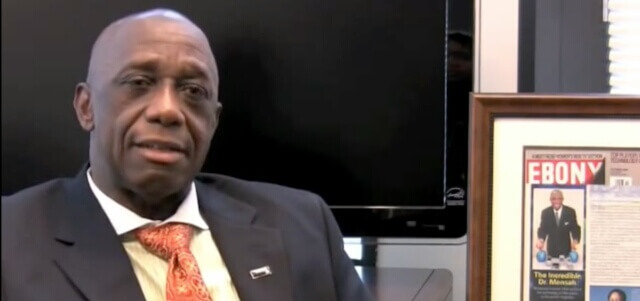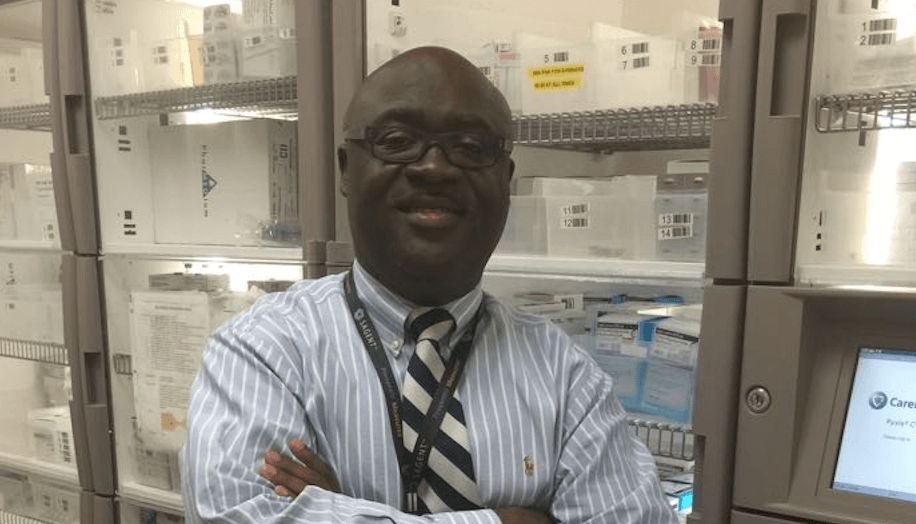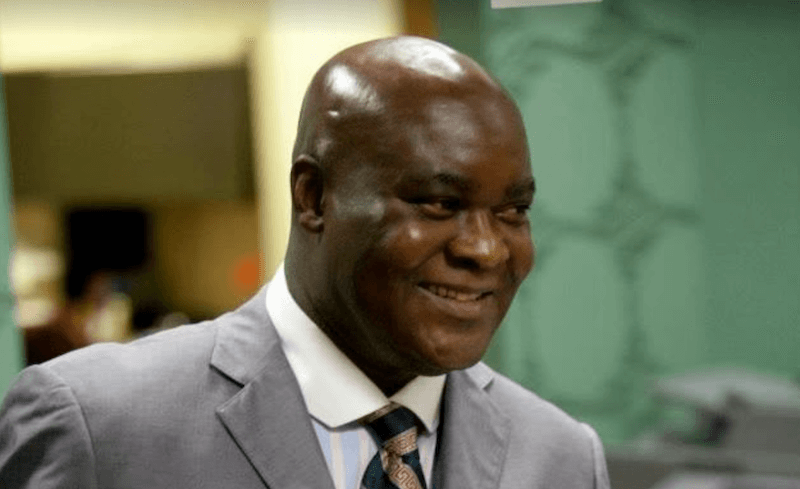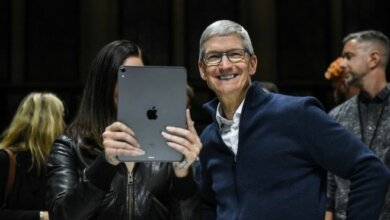Victoria Gray, first sickle cell patient treated with CRISPR speaks
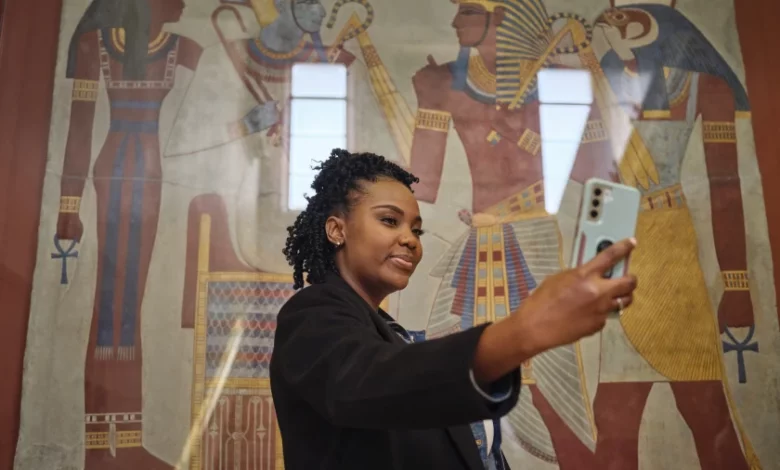
As a child who loved to read, Victoria Gray identified the pain that stalked her life while still in elementary school. Doctors had diagnosed sickle cell disease when she was three months old, but it wasn’t until Gray found a definition in a book that she understood what was happening to her body.
There was pain – lots of it, and utter fatigue. It limited time in school and interactions with friends. “Every year that I got older, I had more and more hospital stays, and so that means more and more crisis, more and more blood transfusions. My dosage of pain medicine went up also. So it was just a hard life from my childhood into my adulthood.”
Still, though doctors could only prescribe more pain meds, and her mother and grandmother could only pray for her release from agony, it took a biotech innovation to finally end her trauma. In 2018, Gray volunteered to participate in a landmark study to determine if cells taken from her bone marrow could be edited using the revolutionary CRISPR technique. The process allows scientists to make precise changes in her DNA that would produce a protein known as fetal hemoglobin, which can alleviate the cause of suffering for people living with sickle cell.
Until recently, a bone marrow transplant from a sibling has been the only approved treatment for sickle cell disease. But in October 2023, the U. S. Food and Drug Administration announced it was reviewing CRISPR therapy to consider adding it to the list of approved cures. And though it has been a long and difficult journey, at age 38 Victoria Gray, who lives in Forest, Mississippi, acknowledges the profoundly different lease on life she’s been given.
Gray shared her role in this historic biomedical accomplishment with 25 international journalists in NPF’s Covering Rare Diseases program on Nov. 13. The following quotes are highlights from the conversation:
Explaining the agony of sickle cell anemia
“The pain episodes, they would come on random. I could wake up and feel good, and then in a matter of minutes, I have pain that would possibly start in my leg or even my arm, and then it would travel across my chest into my other arm. It felt like I was being struck by lightning because it moved so fast, like electricity, and it would just bounce all around my body. I felt like I had been hit by a truck also because this was a pain I couldn’t rub out,” Gray said.

“We tried all the recommended remedies, meditations, hot towels, massages. I would even have real strong pain medicines at the house, I had Dilaudid at home, and that wouldn’t even stop my pain. And it was everywhere and it was breathtaking. A lot of times took away my full ability to walk or use my arms.”
The effect on her family
“I could hear my grandmother’s prayers out loud, just begging God to give me some relief to take away my pain. And I knew my mom was tired. I would have crises sometimes two, three o’clock in the morning waking up out of my sleep, so they would have to get up out the bed and see about me. I know there was a challenge for your child to have pain and you have no ability to stop it.”
When hope became pointless
“I still was hopeful as a kid,” Gray said, so she pursued a nursing degree after high school, graduating from a CNA program. She also began growing her family and had children while in college.
“I went back to school, but my health really failed me. In 2010, I had my longest hospital stay. It was from mid-October during my fall break from college, and I didn’t get out of the hospital until about Jan. 12. I had to go through full rehabilitation to learn how to walk and stand on my legs. I had to have rehabilitation for my arms also because I couldn’t even feed myself. I relied on the nursing staff, the CNAs to give me a bath, to help me put my clothes on, everything. The pain was so severe. So after that, I knew that I just had to stop trying to go to school and just focus on my health and focus on my kids”.
Learning about CRISPR
It was when Gray was planning to get a bone marrow transplant from her brother that she was given an experimental new option, CRISPR gene-editing therapy, from Dr. Haydar Frangoul, Director of the Pediatric Stem Cell Transplant program at Tristar Centennial Children’s Hospital and the Sarah Cannon Research Institute in Nashville Tennessee.
Gray had been concerned about graft versus host disease with the transplant.
“[Frangoul] explained that there was no chance of that because the cells that I would be receiving would be my own, so my body wouldn’t fight off itself. After that, I felt real confident in that procedure, but I did have to come back to my faith and pray. I sought God first and I said, ‘If this is what you have for me, give me peace in my heart and remove all fear.’ And needless to say, the fear was gone. I said yes to Dr. Frangoul, and this was within a 24-hour period.”
Why prior medical experience might have caused her to reject a life-saving cure
Gray trusted Frangoul but said if CRISPR had been offered at a facility where she had received poor treatment, she likely wouldn’t have agreed to the experimental treatment.
“A lot of times I was treated very poorly. I had a nurse tell me that all sickle cell patients were destined to become drug addicts … we had been on medicine for all these years and now we end up in the ER just from withdrawal pains and we weren’t really in crisis … and this was while I was on the table in crisis, couldn’t even stretch out my legs. And then there was other times where they leave me in the waiting room from anywhere to six to 12 hours without treatment while I’m out there hurting and crying.”
The Turning Point with CRISPR
“It took about eight months before I really noticed a change. … But it was exciting. One day I woke up and I didn’t feel any pain. I thought my body was numb, honestly. I started pinching my face, pinching my thighs, but I felt that pain, so I was like, ‘Oh God, this finally is working.’ I was in disbelief.”
Why journalists need to report on biomedical advances
“Even though I made it over, there’s still so many millions of others with rare disease who are suffering. It is one of the hardest things when you feel alone and you feel like your body is fighting against you … It’s important for you guys to hear – and the people who are going through it to hear, to know not to give up, that our words and our voice, they’re not in vain. … We can bring hope to all these countries, India, Nepal, Africa, by speaking up. It’s going to take all of us. And we got to help the people with the diseases know they have the power to speak for themselves also.”
Gray was joined by 2022 Covering Rare Diseases fellow Portia Gabor, who is a multimedia producer and anchor with TV3 in Accra Ghana. Like many of the international journalists in the program, Gabor acknowledged the challenge of reporting on rare diseases in countries where access to information, research education and viable treatment for rare diseases is scarce or non-existent.
But Gabor has been able to produce high-profile features about rare diseases in the African context and believes journalists must commit to elevating this urgent health issue globally.
Why covering rare diseases in Ghana is necessary
“There was a couple in Ghana who had left their 4-year-old child in the forest to die because the child had a rare disease and they felt that child was an evil child. … It tells you the hidden trauma that persons with rare disease go through because they are not supposed to come out. No one tells their story. The Rare Disease Fellowship gave me the opportunity to amplify the voices of persons in the rare disease community whose voices cannot be heard.”
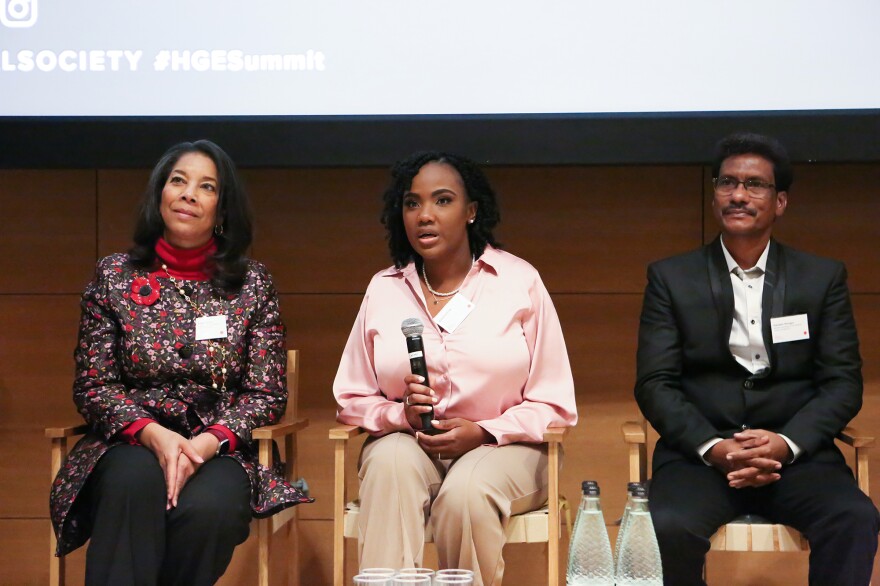
The sobering responsibility of amplifying the issue
“In Ghana, 17,000 babies are born with sickle cell disease every year. Many parents do not even know their wards have sickle cell disease until their first pain or crisis. … Victoria’s talking about CRISPR, bone marrow transplants, but I bet you many people are not even aware that these are available … even the medications that they take are so expensive that they cannot afford to buy when they’re struggling to even make $1 a day.”
Voice for the voiceless
“Sometimes you get persons with sickle cell disease instead of going to the hospital, rather come into the journalists to help them access treatment … You just cannot do a story and leave it hanging, but to progress further and speak to advocates, speak to policymakers to ensure that there’s change in society. At times when I’m quiet and I don’t do stories on rare diseases, I get phone calls and they’re telling me that I’m supposed to be their mouthpiece. If I stop doing stories on rare diseases, it means they also do not have the voice to also speak out. It tells you how important and the role of journalists ensuring that the voices of persons with rare diseases are amplified.”
Access the full transcript here.
Source: National Press Foundation
Abeeb Lekan Sodiq is a Managing Editor & Writer at theafricandream.net. He’s as well a Graphics Designer and also known as Arakunrin Lekan.

